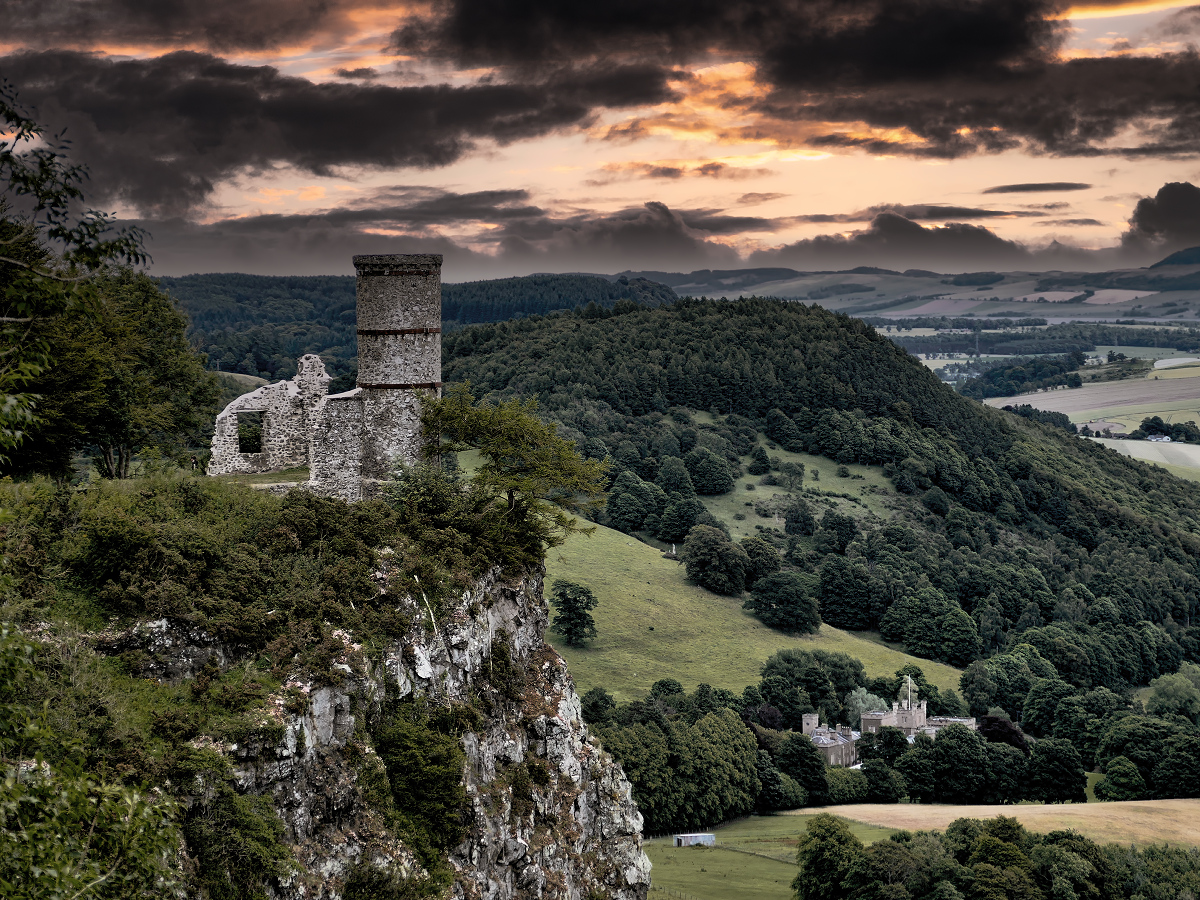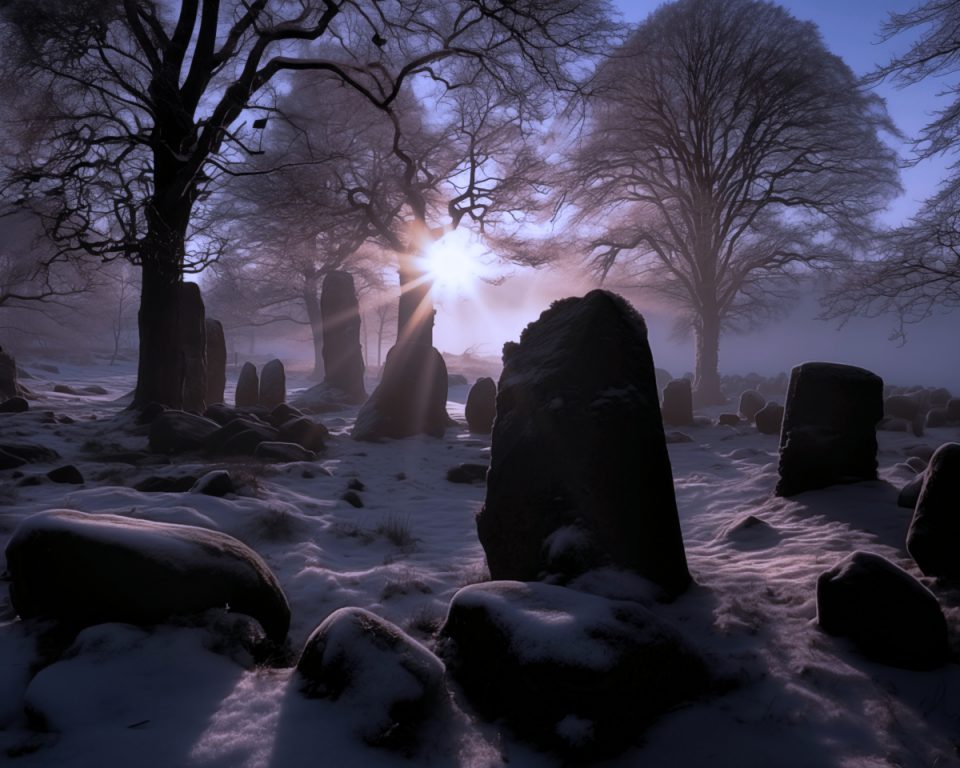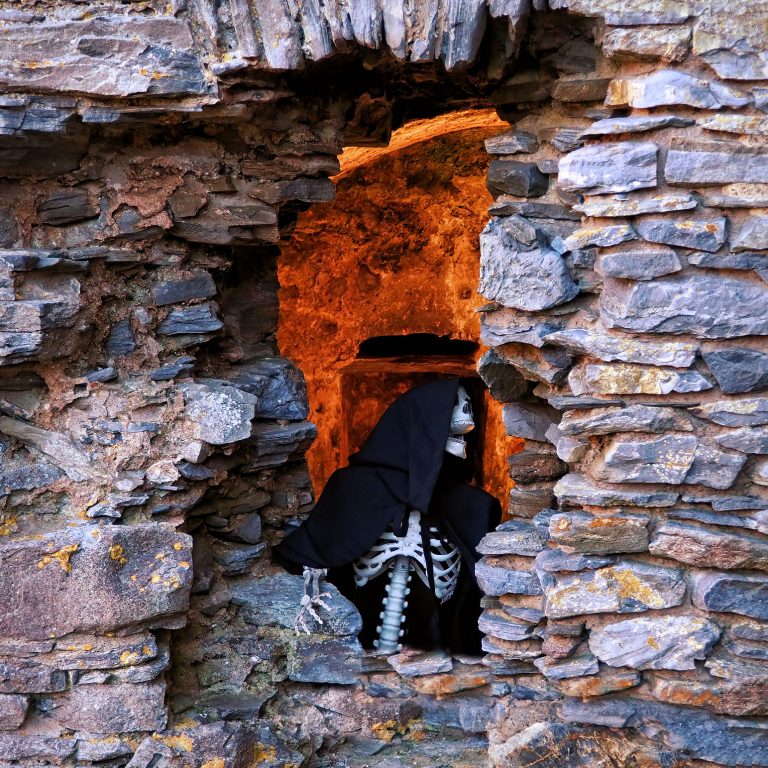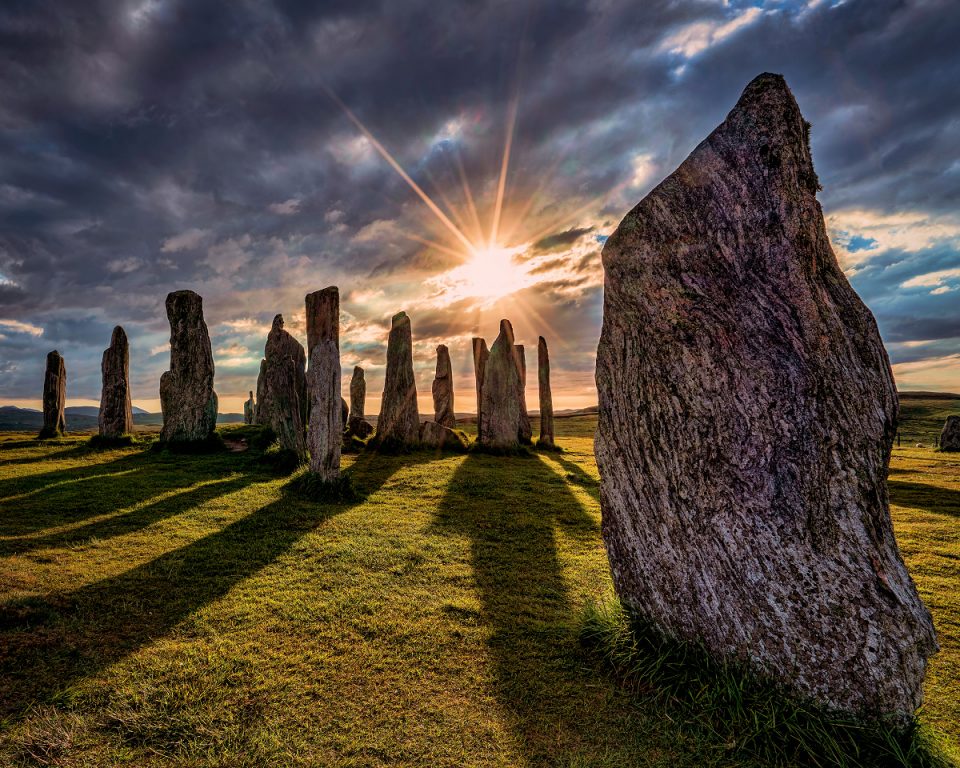The Dragon’s Hole was said to be the den of a deadly dragon during the 6th Century. The beast would leave its lair within the steeply wooded slopes of the Kinnoull Hill in Perthshire and descend on the helpless inhabitants of the Tay Valley. Cattle were slaughtered and beautiful maidens were abducted. In desperation, the people turned to Saint Serf, a Pictish saint, and begged him to rescue them.
Armed only with his staff, Saint Serf, set off eastward. Standing at the entrance to the Dragon’s Hole, he summoned the beast. As it came forth out of the cave, the monk called on God and slew the dragon with his staff. In honour of this great feat, the locals were said to have instituted the annual Festival of the Dragon. It was held on Beltane, 1st of May. However, it would seem that these festivities were more ancient in origin and date back to pre-Christian times.
Beltane Festivities
Beltane was one of the four quarter-day festivals in the Gaelic year, the others being Lughnasadh, Samhain and Imbolc. The passing of the seasons and the turning of the wheel of the year was important to the early inhabitants of Scotland. From Neolithic times the heavens had been watched and the solstices and equinoxes had been celebrated. Many of the major events during the farming year occurred on the quarter days, halfway between equinoxes and solstices. Beltane marked the return of summer. This was an important time in the farming year when the land became fertile and the herds were set out to pasture.
The word Beltane translates as ‘bright fire’ and as such the lighting of the Beltane fire was a central part of the ritual. Household fires were doused before the lighting of the bonfire. The Beltane rituals were used to protect livestock, crops and people and to promote growth and fertility. Fire was used to purify and heal. The fire would have been walked around and jumped and danced over. Farmers would have driven their cattle between the bonfires to cleanse them before putting them out to pasture.
The hearth fires would then be re-kindled as a new ‘neid’ fire. Thus, all the households in the community were connected to one another through the sacred Beltane Fire.
Beltane Goddesses
It was a time of remembering the Mother Goddesses. It seems that the months from Beltane to Samhain were governed over by Brìde, while the months between Samhain and Beltane were governed over by the Cailleach or the Carlin. The fight between the two Goddesses was used to explain the passing of the seasons. It was also a time of worshipping Bel or Belinus, the Ancient Celtic Sun-God or the ‘Shining One’.
Significantly, the Dragon at Kinnoull was consecrated to Bel. Yearly processions were made to the Dragon’s Hole on the 1st of May. Kinnoull Hill was doubly sacred as there is a hollow at its summit near a place called Windy Gowl. In this narrow crevasse, an echo repeats nine times. Nine was a number of great significance to the ancient Celts, making it likely that this site was used in pre-Christian times.
Festivities at the Dragon’s Hole
In George Penny’s Traditions of Perth, he records the experiences of one Oliver Tullideph:
“At the opening of a dark but narrow fissure in the rock stood a figure fantastically dressed and adorned with garlands of flowers. Several young men and women were clambering up the rocks towards the cavern, while a knot of spectators stood below, whose shouts rent the air, as occasionally some unlucky aspirant missed his or her hold, slipped down again into the crowds or, more unlucky still, regained not their footing until they had toppled down the steep bank beneath, which was formed of small stones too recently dislodged from the parent rock to admit even a handful of furze or fern to break the fall of the unskilful.
Beyond this crowd a long line of people in their holiday attire among whom many religious habits were visible, extended along by the foot of the cliff, until lost to view within a ravine, out of which the procession seemed still slowly advancing.
As Oliver drew near, he observed an elderly respectable-looking citizen standing aloof from the rest. To him he advanced, and after the usual salutations of the morning, enquired what the concourse meant. ‘You are surely a stranger in these parts,’ replied his informant, ‘not to have heard of the Festival of the Dragon on May morning.’ ‘I had heard of such a custom being observed at St Johnstoun, but knew not that a spot so wild and romantic had been chosen for its celebrations. I think it is said to have its origins in the rejoicings which were instituted after the slaughter of a dragon which long infested the neighbourhood.’”
The Dragon’s Hole and the Reformation
To the zealots of the Protestant Reformation, the origins of the Festival of the Dragon was one and the same whether pagan or Papist. It was idolatrous! Thus, on the 9th of May 1580, the Kirk Session brought out a new law.
“Because the Assembly of Ministers and Elders understand that the resort to the Dragon Hole by young men as by women, with their piping and drums striking before them through this town, has caused no small slander to the congregation. The said Assembly have ordained that no person report or repair to the said Dragon Hole as they have done in times bygone, namely in the month of May, nor shall pass through the town with piping and striking of drums, as heretofore they have done, under the penalty of twenty shillings (Scots) to the poor, to every person that shall be found guilty; also that they shall make their public repentance upon an Sabbath day in presence of the people.”
This might have been the death knell for the Festival of the Dragon but local girls were still climbing Kinnoull Hill into the 19th Century to wash their faces in the dew on May Day morning.
The Dragon’s Hole and the Stone of Invisibility
The Kinnoull Dragon was said to have an enormous diamond-like stone in the middle of its forehead. This carbuncle was considered to be the source of the dragon’s power. The magical powers of the stone were said to render its possessor invisible.
Around 1600, a certain James Keddie of Perth was said to have found this gem, where it had lain for some thousand years. Alas, his fortune was short-lived. James lost it while trying to play a trick on his friends under the cloak of invisibility. He searched and searched but the gem was lost to him forevermore.
William Wallace and the Dragon Hole
The Dragon’s Hole is extremely difficult to access and has room to accommodate a dozen people. Thus, it was said the William Wallace used the cave as a hiding place, during his military manoeuvres around Perth.
Kinnoull Tower
Kinnoull Hill is steeped in ancient myth and legend. Perhaps it is fitting that, during the 19th Century, the Earl of Kinnoull built Kinnoull Tower, on the hill’s summit. This was a folly inspired by the Castles of the Rhine in Germany. Its ruins add to the mystic of the area.
Happy Beltane
Spooky Scotland wishes you and yours a happy Beltane. Please use the links below to share the Spooky.




